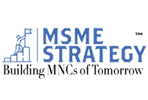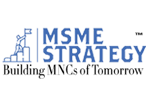MSMEs in E-Commerce: Strategies to Build and Scale a Profitable Online Business
In the current era, going “digital-first” is no longer optional for MSMEs — it’s central to growth and survival. With Internet penetration rising in India, online marketplaces evolving, and consumer behaviour shifting decisively toward buying online, MSMEs have a rare window to leap ahead through e-commerce. But moving online is one thing — building profitability and scale is another.
This article lays out a clear, actionable roadmap for Indian MSME owners and business leaders to harness e-commerce effectively. You’ll find frameworks, India-specific insights, and practical strategies you can act on today. Whether you are just starting your online journey or scaling up, this guide is for you.
Why E-Commerce Must Be Part of Your MSME Growth Strategy
Before diving into tactics, let’s anchor on why this matters:
- Market potential is huge. India’s e-commerce industry is expected to grow at a CAGR of ~27% to reach US$ 163 billion by 2026.
- Consumer base is expanding. The number of online shoppers in India has jumped from 140 million in 2020 to ~260 million in 2024.
- Digital adoption yields real results. MSMEs integrated with e-commerce platforms report ~65% growth in turnover, and over half report higher profits.
- Access beyond local markets. A survey of 2,007 Indian MSMEs showed how platform integration opens up national reach beyond local catchment.
- Policy and infrastructure support. Initiatives like ONDC (Open Network for Digital Commerce) are lowering the entry barrier for small sellers to reach a wider digital ecosystem.
Given this context, the question shifts from “Why go online?” to “How do we build a sustainable, growing online business for an MSME in India?”
Key Challenges for Indian MSMEs in E-Commerce
Before laying out the roadmap, it’s crucial to acknowledge the challenges many MSMEs face in India. Doing so helps to anticipate risks and plan mitigation:
- Digital capability gap
Many micro and small businesses lack digital skills (cataloging, SEO, digital marketing). - Logistics and fulfillment constraints
For sellers in tier-2 or tier-3 towns, delivery costs and reliability become obstacles. - Cash flow and working capital
Managing inventory, returns, refunds, and payments cycles can stress finances. - Platform dependency & commission pressure
High commissions and lack of control over branding or customer data are common criticisms of marketplaces. - Regulatory, compliance, and taxation uncertainty
GST, import/export norms, and digital registration may seem complex to small business owners. - Trust, branding, and quality perception
Consumers often prefer well-known brands; smaller MSMEs must overcome trust barriers.
These challenges are real — but none are insurmountable. The rest of this article provides strategic guidance to navigate them.
Framework: Stages of Building & Scaling an MSME E-Commerce Business
You can think of the journey in three stages. At each stage, certain priorities shift.
| Stage | Priority Focus | Key Objectives |
| Stage 1: Launch & Product-Market Fit | Validate your online offering | Test demand, refine product mix, build initial sales |
| Stage 2: Optimization & Growth | Improve unit economics | Drive traffic, reduce costs, increase conversion, manage margins |
| Stage 3: Scale & Diversify | Expand reach & resilience | Enter new channels, markets, build brand equity, integrate operations |
Below is a stage-wise strategy checklist.
Stage 1: Launch & Product-Market Fit
- Select the Right Product or Niche
- Focus on SKUs that are lightweight, non-fragile, fast-moving and have good margin buffer.
- Use your local context: Are there unique crafts, regional specialties, or under-served categories in your region?
- Validate via small batches or pilot runs before scaling inventory.
- Choose Channel Strategy: Marketplace, Own Site, or Hybrid
- Marketplace first (Amazon, Flipkart, Meesho, etc): lower upfront cost, instant visibility.
- Direct-to-consumer (D2C) site: full control over brand, higher margins, direct customer relationship.
- Hybrid: begin in marketplace, and once volume & brand traction build, drive traffic to your own site.
- Onboard to ONDC & Alternate Networks
- ONDC aims to democratize e-commerce access for MSMEs, enabling listing and discovery without heavy commission drag.
- Explore local aggregator platforms or hyperlocal apps in your region.
- Basic Setup & Tools
- Register your business (e.g. Udyam registration for MSMEs in India).
- Use a simple, scalable ERP or inventory tool (even Google Sheets + Zapier to start).
- Establish reliable payment gateways, return/refund policies, listing guidelines.
- Launch, Test, Iterate
- Start with a subset (say 10 SKUs) across one or two marketplaces.
- Monitor key metrics: visits, add-to-cart, conversion rate, return rate, average order value (AOV).
- Use customer feedback to refine product descriptions, images, packaging, pricing.
Stage 2: Optimization & Growth
Once you see traction, shift focus to improving unit economics and scaling smartly.
- Customer Acquisition & Marketing
- Leverage marketplace advertising tools (e.g. Sponsored Products).
- Use social media (Instagram, Facebook, Reels) for storytelling, behind-the-scenes, product demos.
- Explore influencer tie-ups in your niche.
- Deploy email marketing and SMS re-engagement (cart reminders, post-purchase offers).
- Conversion & Retention Optimization
- A/B test product titles, images, and CTAs.
- Prioritize mobile-first design and page speed (many customers in India use lower-end smartphones).
- Add social proof: reviews, star ratings, customer photos.
- Upsell and cross-sell complementary SKUs to increase order value.
- Supply Chain & Cost Efficiency
- Negotiate better rates with logistics and courier partners through bundling or scale discounts.
- Use regional warehouses or 3PLs closer to customer clusters.
- Maintain buffer stock for fast movers; use just-in-time ordering for slow movers.
- Data & Analytics
- Track cohort metrics: repeat purchase rate, customer lifetime value (CLV).
- Use marketplace dashboards plus tools like Google Analytics or built-in site analytics.
- Monitor return reasons and defect rates — plug quality gaps.
- Cash Flow Management
- Forecast working capital needs 3–6 months ahead.
- Use receivable financing, supply chain financing, or MSME-friendly loan schemes.
- Time promotions wisely to avoid deep discounting that erodes margins.
Stage 3: Scale, Diversify & Build Brand Equity
When fundamentals are stable, it’s time to build defensibility and future growth.
- Expand to New Sales Channels & Geographies
- Add more marketplaces, domestic and global (e.g. Amazon Global, Etsy).
- Tap into the export potential — many MSMEs now sell globally via digital platforms. (E-commerce is fueling MSME exports)
- Use ONDC and similar networks to reach smaller towns and underserved markets.
- Strengthen Your Brand
- Invest in packaging, unboxing experience, loyalty programs.
- Develop content — blogs, video, how-to guides — to become a niche authority.
- Use brand storytelling rooted in your origin, region, or craftsmanship.
- Build Ecosystem Partnerships
- Collaborate with complementary MSMEs (bundling, co-marketing).
- Tie up with retailers or kiosks for omnichannel presence.
- Partner with fintech, logistics players and platform aggregators for bundled services.
- Automation, Systems & Talent
- Automate repetitive tasks (order download, label printing, inventory sync).
- Upgrade to scalable systems (more advanced ERP, PIM, OMS).
- Hire or train a small team for customer support, digital marketing, analytics.
- Resilience and Risk Management
- Don’t depend on a single platform or channel.
- Maintain some buffer in inventory and cash.
- Monitor policy changes (GST, e-commerce rules) and stay compliant.
India-Specific Tips, Opportunities & Regulatory Notes
- Leverage Government Schemes & Certifications
- Use Udyam registration to avail benefits, subsidies, and scheme access.
- Monitor schemes under “Make in India” or electronics manufacturing for incentives.
- Use MSME “Champions” portal for grievance redressal and support.
- Adopt ONDC early
ONDC offers a more open, less commission-heavy route for market access. If your product mix suits it, participate early. - Tap Tier-2 / Tier-3 & Rural Demand
Digital adoption is rising fast in smaller towns; many new online shoppers come from these geographies. - Manage GST, Import / Export Regulations
- Understand HSN codes, IGST / SGST split, and proper invoicing for cross-state sales.
- For exports, utilize schemes such as MEIS / RoDTEP as applicable.
- Factor customs, duties, and international courier compliance if going global.
- Digital Trust & Payment Options
- Offer multiple payment modes (UPI, wallets, credit card) to reduce friction.
- Use secure SSL, visible refund policies, and reliable support to build credibility.
- Stay Adaptable to Trends
- Social commerce and live commerce are rapidly growing — consider live-selling your SKUs.
- AI / automation tools (chatbots, recommendation engines) can give you an edge.
- Sustainability, local sourcing, and “made in India” stories resonate with modern consumers.
Actionable Checklist for MSME Owners
Here’s a distilled checklist you can run through as you build or scale your e-commerce venture:
- Pre-launch
- Identify 10–20 test SKUs with good margin potential
- Do competitor benchmarking (pricing, packaging, shipping)
- Get formal Udyam registration and all necessary compliance in place
- Choose one marketplace + optional D2C site
- Launch & Validate
- List test SKUs, run small ad budget
- Observe sales, returns, feedback over 4–6 weeks
- Optimize listings, pricing, images based on data
- Optimize & Grow
- Scale best SKUs, retire weak ones
- Expand ad spend, content marketing, influencer outreach
- Negotiate logistics and warehouse tie-ups
- Automate inventory and order workflows
- Scale & Futureproof
- Expand to new channels, towns, international markets
- Strengthen brand, content, customer loyalty
- Hire capabilities (digital, analytics, operations)
- Keep contingency buffers, diversify risk
Use this checklist as a living tool and revisit it every 3–6 months.
E-commerce presents a transformative path for Indian MSMEs — but success depends on deliberate strategy, operational discipline, and incremental scale. Begin small, validate your proposition, optimize relentlessly, and then scale sustainably.
As you move on this journey, MSME Strategy is here as your guide. If you’d like tailored consulting support to map your e-commerce roadmap or accelerate growth, feel free to explore our services at msmestrategy.com/pricing.
Which of these stages feels most relevant to your business today, and where do you want us to help you next?
Hashtags:
#MSMEStrategy #MSMEgrowth #SMEIndia #businessstrategy #MSMEexpansion #ecommerceIndia






